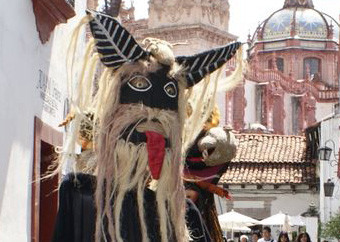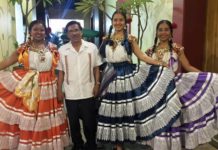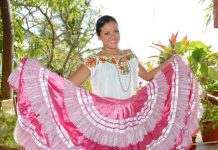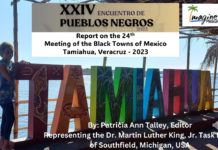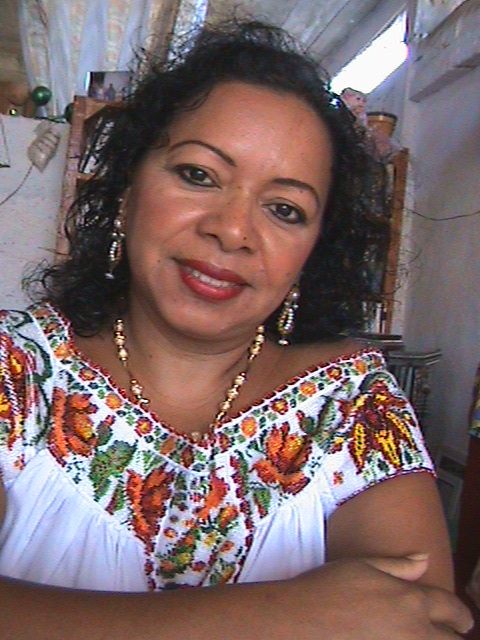Enjoy This Unique Combination of Indigenous, African, and Spanish Cultures
By: Candelaria Donají Mendez Tello and Carlos Irra*
Talking about the 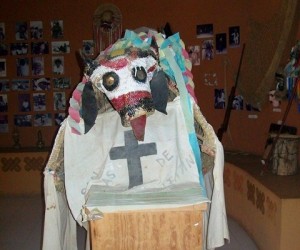 state of Guerrero is talking about roots, traditions, art, culture, crafts, music, dance, stories, ballads, and poetry. Guerrero is one of the richest states in traditions; our roots come from our ancestors.
state of Guerrero is talking about roots, traditions, art, culture, crafts, music, dance, stories, ballads, and poetry. Guerrero is one of the richest states in traditions; our roots come from our ancestors.
After “the conquest,” the population changed significantly as it integrated the cultures of Spain, the Philippines, China, Japan, and Africa, which is particularly less recognized and which is still being observed today in the Costa Chica region of Guerrero. It makes us a people with an impressive past and a present filled with pride that we want to show to the world.
“Day of the Dead” is Connected to the African Culture in Costa Chica
From October 31st to November 2nd, México celebrates “The Day of the Dead,” also called “for the faithful departed” (fieles difuntos). This is a very special celebration throughout the country; however, in the Municipality of Cuajinicuilapa, Guerrero, in the Costa Chica region where the black population is settled, this celebration has a particular meaning.
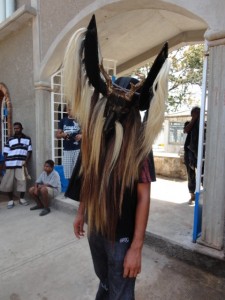
During the “Day of the Dead” celebration, Afromexicans who live in the villages of Costa Chica, perform the “Dance of the Devils,” representing the spirits of the dead. The celebration begins on the last day of October, which according to tradition is a celebration for the “Dead Children,” those who died before age 16. On November 1st and 2nd, there is a celebration for the “Dead Adults,” aged 17 and older.
The highlight of the “Dance of the Devils” celebration in Costa Chica is the “Devil Mask,” which has a long mustache and a beard made of horse mane and tail. The mask is undoubtedly the most symbolic and the most important to the population of this area.
Residents Perform the Dance of the Devils Ritual
Residents in Costa Chica perform the “Dance of the Devils,” as enslaved Africans originally danced it, and they remember the oral tradition of the African god “Riuja.” It is a dance where you have to be very strong, both physically and spiritually.
Dancers must obtain permission from the cemetery (Panteon) that organizes the ritual to participate. Moreover, it is essential to mention that historically, the “Dance of the Devils” was performed only by men, but today, women have been integrated into the performance to preserve the tradition.
The music of this dance is very happy, not sad. The instruments used are the jawbone of a donkey or horse, harmonica, and the big can made of aluminum known as Tigrera (Bote). Together, they emit a peculiar sound and lead the pace of the dance. 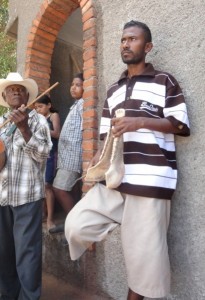
Finally, the “Day of the Dead” in Cuajinicuilapa (Cuaji) is a celebration full of color, dance, food, and reunion with loved ones who have passed. It connects us to the black African presence in México and it can be watched and enjoyed by all.
We invite you to visit the Costa Chica region of Guerrero where the Afromexican culture still lives even with the technological advances of today.
Watch this Dance with the Devils!
*About the Author and Translator: Professor Candelaria Donají Mendez Tello is an instructor of tourism at the Universidad Autonoma de Guerrero in Zihuatanejo and is an expert in Afromexican studies. She is currently the president of Mexico Negro, A.C., one of the leading civil rights organizations in the country. Mr. Carlos Irra, a graduate of that university, is the Manager of the Villas at Embarc Hotel in Zihuatanejo, Guerrero.
Related Article

